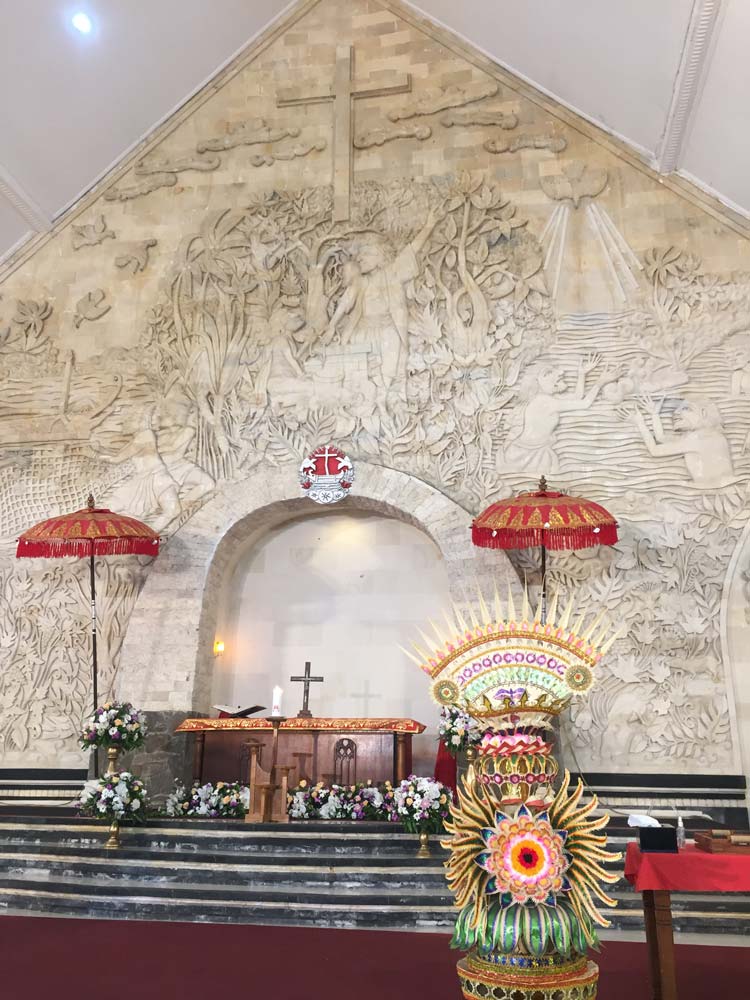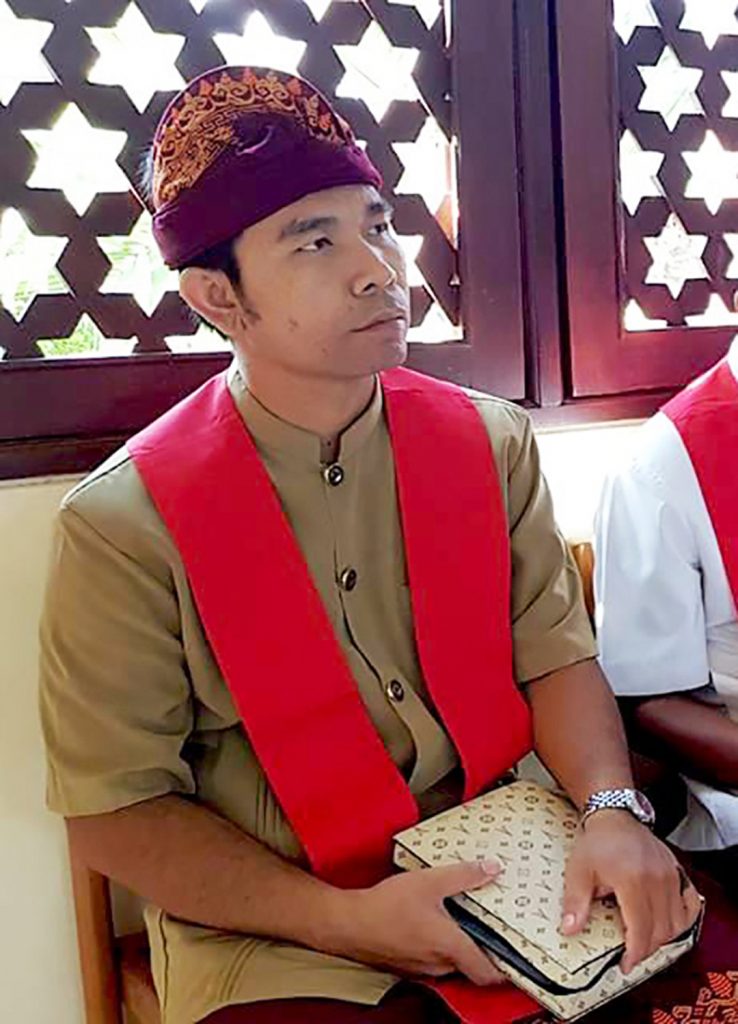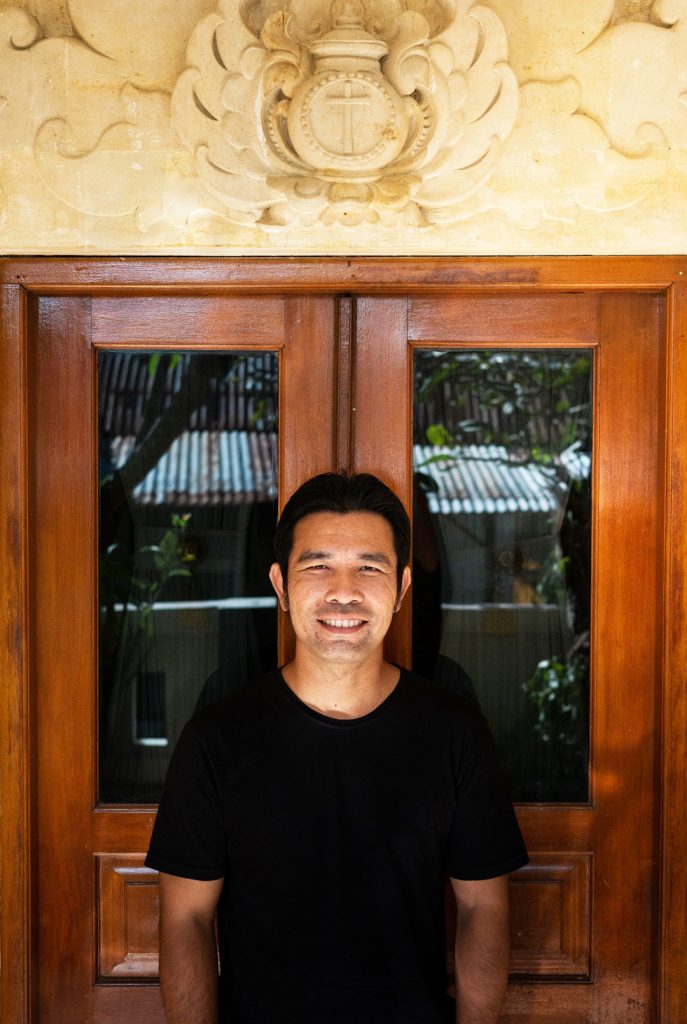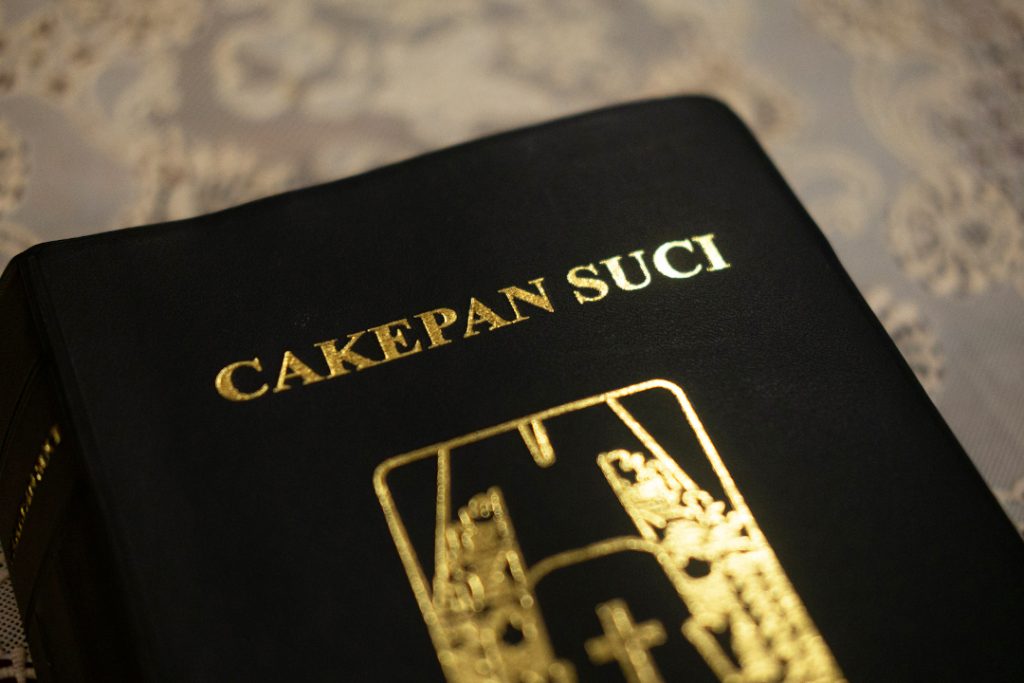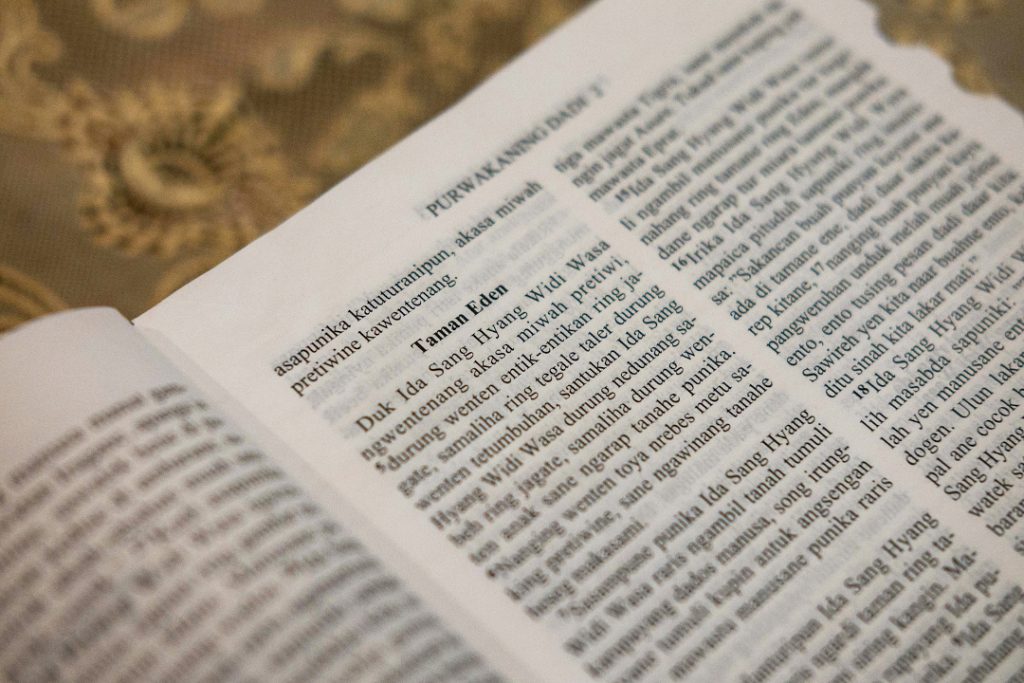When one thinks of Bali – its culture, its identity and its very image – there is little doubt that many will picture stone temples, canang offerings and colourful ceremonies. BUT, this isn’t everyone’s Bali, there are other communities who very much identify with their island, but instead worship at pews and not at shrines, and sing hymns instead of mantras.
Being a Balinese Christian sometimes catches people off guard, says I Made Gidiyon, who has grown up in a neighbourhood predominantly made up of Protestants and Catholics. “They don’t react badly, they’re just a little shocked!” Shares the resident of Banjar Umacandi, found 15-minutes north of the popular Canggu village.
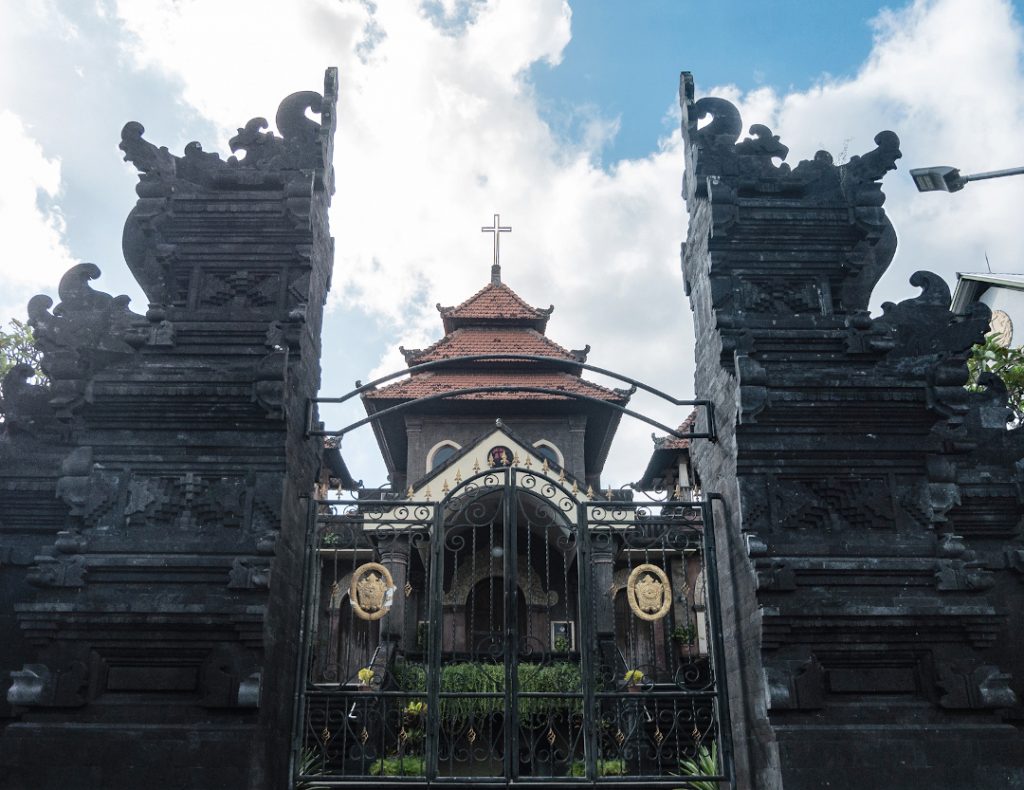
The change in landscape is obvious in the neighbourhood and its surroundings, churches and cathedrals of different styles line the road there, standing as bastions of the area’s majority faiths. Of course, Hindu temples are interspersed between them as normal.
Balinese Christians find themselves in a very unique situation. They are on a Hindu majority island, found within a Muslim majority country. They are, therefore, a minority community within a minority community.
You see, Christianity has never had a strong foothold in Indonesian history. Other faiths like Buddhism, Hinduism and of course Islam spread throughout the archipelago – in that order – through empires and kingdoms. Noteworthy introductions to the faith came through trade and colonisation, first from the Portuguese at the start of the 16th century, then from the incumbent Dutch at the end of the century.
At first, the Dutch – as the Dutch East India Company (VOC) – banned many missionaries from working within the archipelago. It wasn’t until 1854, when the Governor General of Dutch State-Controlled Indonesia at the time opened the region to missionary work, allowing the Catholics to work in Flores and beyond, and the Protestants the rest of the Lesser Sunda Islands, including Bali.
Missionary work was fruitless at the beginning. The Dutch Utrecht Missionary Society sent missionaries to the island with often frustrating results. One account shares the story of Reverend van Eck, the second missionary to the island, who managed to convert one Balinese, his servant, a Gusti Wayang Nurat Karangasem turned ‘Nicodemus’. The singular convert was preached to by van Eck and another missionary, Reverend de Vroom. Societal pressure mounted on poor Nicodemus, who later had de Vroom murdered, leading to his own execution. An abysmal start indeed.
It wasn’t until 1927, when theDutch State-Controlled Indonesia allowed a Chinese evangelist from the Chinese Missionary Alliance by the name of Tsang To Han, when (after much drama) eleven new Christians were baptised in 1931. This is often referred to as the ‘milestone’ in the birth of the Balinese Church. Tsang was later deported in 1933 for his fervent missionary style, but had already converted at least 300 Balinese Hindus by this point.

Inside a Balinese Protestant Church during a wedding 
I Made Gidiyon going to church in full Balinese traditional attire 
I Made Gidiyon in front of his home
The VOC allowed the Dutch Reformed Church to enter Bali, so that these 300 Balinese Christians could be ministered to. This eventually led to the creation of the Gereja Kristen Protestan di Bali – or GKPB – which became a legal entity in 1949. By this point, Indonesia had declared independence and under the new national principles of ‘Pancasila’, all Indonesians were allowed the freedom of faith – that is, out of the five monotheistic faiths officially recognised under these principles i.e. Islam, Hinduism, Buddhism, Christianity and Confucianism.
According to a 2010 census (Badan Pusat Statistik Provinsi Bali), there are now 31,397 Protestants in Bali, making up only 0.8% of the entire population (3,890,757 at the time). This shows a considerable growth in the community.
Despite its growth, Balinese Christians remain a small minority on the island and indeed have their identities questioned occasionally, but more so out of curiosity rather than malice. With Hinduism so intertwined with the idea of being Balinese, how do the Balinese Christians see themselves? Does their different religion mean that their ‘Balineseness’ is therefore diluted?
“I still strongly identify as Balinese,” shares I Made Gidiyon, whose very name perfectly represents his two pillars of identity: Made, the Balinese birth order name; and Gidiyon, a derivative of Gideon, a character in the Bible’s Old Testament. He continues this tradition with his own children, giving them all birth order names as an ode to their Balinese heritage.
Very little about Gidiyon, his family or even the whole community would suggest that they are “non-Balinese”. Perhaps only if asked directly what his religion is would you learn that he is not Hindu.
Still, in this Christian-majority neighbourhood, the system of the banjar continues, the village gathering where the community take part to help one another or organise locally important matters.
“When we hear the call of the kul-kul drum, we will gather like all Balinese do. It might be to pay respects to a neighbour that has passed away, for example. We will go to their home no matter what religion they are.”
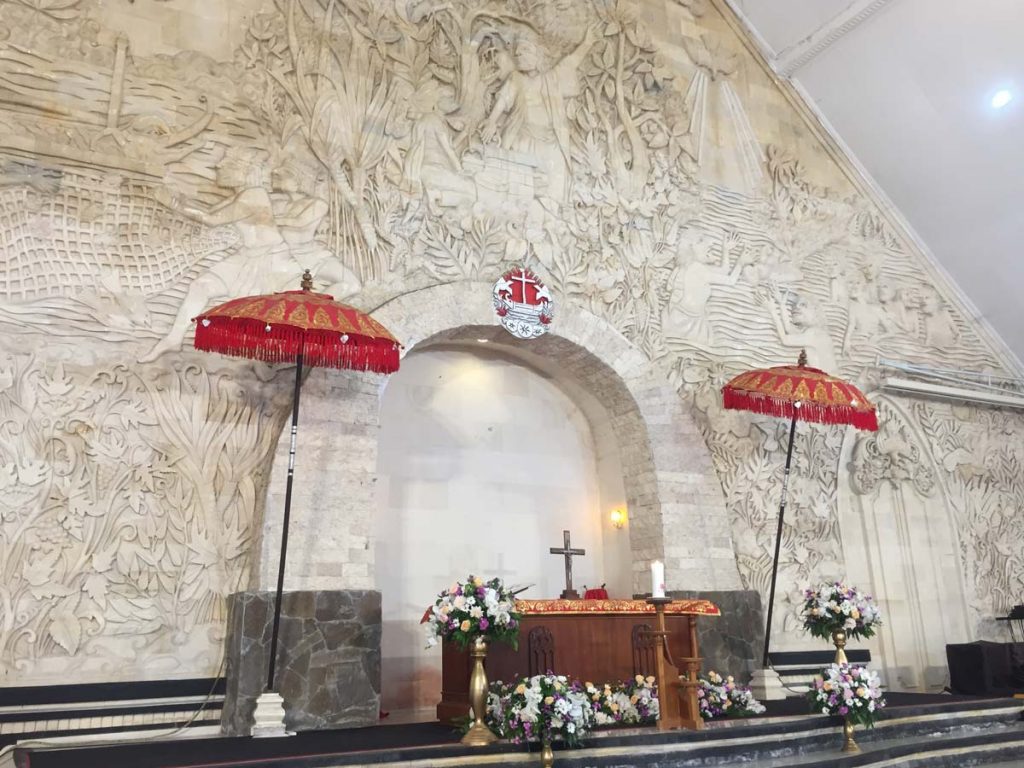
Currently, the head of the banjar is Hindu, but in the past the head has been Protestant and also Catholic. They will gather for practical matters, but when it comes to each religion’s own celebrations or auspicious days, they will do this separately. Even religion-based community activities are normally done only by those who ascribe to that faith, such as the creation of the Ogoh-Ogoh, giant monstrous effigies that are paraded on the streets on the eve of Nyepi, the day of silence. “Normally this would be the Hindu youth who take part in this, but still they are open for any of the young members of the community to join if they wish”, says Gidiyon.
Even during his church service the Balinese identity can be seen. “Every five weeks our congregation will go to church dressed in baju adat, or traditional Balinese attire. That service will also be held in the Balinese language, rather than usual Indonesian,” says the devotee. He shows me a Bible in full Balinese, called the Cakepan Suci, which they use on this day.
A fun fact regarding the Bible in Balinese, shared by Fred B Eiseman Jr. (Sekala and Niskala, 1990): When the Protestant missionaries first came to Bali, their first task was to translate the holy book into the local dialect. They struggled to find a term that could reflect the concept of a single, almighty god. They settled for Sang Hyang Widi. This was in turn adopted by the Balinese Hindu after Indonesian independence, having to prove that their faith was indeed monotheistic. Thus, all the gods in Balinese Hinduism are considered manifestations of a single almighty god, termed Sang Hyang Widi Wasa, borrowing from the Protestant’s initial translation.
Elements of Bali are seen even outside of Gidiyon’s church, Jemaat Elfrata. It’s entrance taking the fashion of the gapura gates, such as those seen at Balinese temples. Larger churches, like the huge Belimbing Sari church in west Bali, feature even more Balinese iconography.

Bible in Balinese Language 
Excerpt from the Bible in Balinese
This ‘Balinisation’ of the church is likely to be a consequence of the vision of a previous director of the GKPB (which Elfrata is under), Dr I Wayan Mastra. “Dr Mastra is a firm believer in a contextualised service. He feels that a conversion to his church should be a religious conversion, not a cultural conversion”, Fred B. Eiseman, Jr., (Sekala and Niskala, 1990). I Made Gidiyon echoed the very same sentiment, feeling that his culture and his religious beliefs are separate and can therefore exist simultaneously.
I Made Gidiyon’s Christian congregation was started as a direct result of Tsang To Han, where around two generations ago a handful of Balinese Hindu were converted into Protestantism by the Chinese missionary himself. Mainly through marriage did Christianity spread through the community, and so cousins and second-cousins are often neighbours in the area – and Hindu cousins or family relations are common too, cementing the feeling of cross-faith togetherness.
This was best expressed by Fred B. Eiseman Jr., “the various groups of non-Hindu faithful in Bali are extremely small minorities on an island-wide basis, each is concentrated in a few communities where their members are the majority. This minimises chances of discrimination or isolation… thus they are able to live happily with their Hindu neighbours. etc.” This is very much the case in Banjar Umacandi, as well as other non-Hindu majority areas.
Yet, despite their safe Christian pocket, this does not reduce their sense of being Balinese. “I named my children with Balinese names, and never have we been questioned by our Hindu friends as to why we would do that, they are very accepting. To us, we can be culturally Balinese, but have the freedom to believe in the religion we want,” says Gidiyon.
So, in the belief of Balinese Christians, they very much identify as people of this island – without question. Their faith runs separate to their identity, only really catching out those who are too quick to assume that all Balinese are Hindu.

